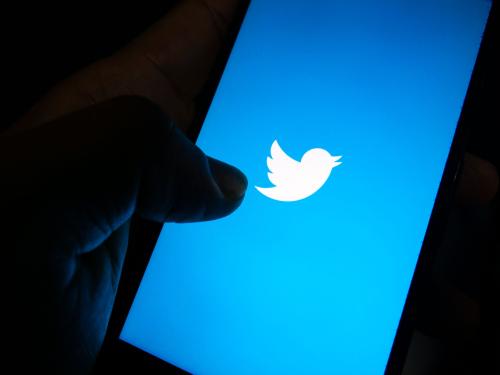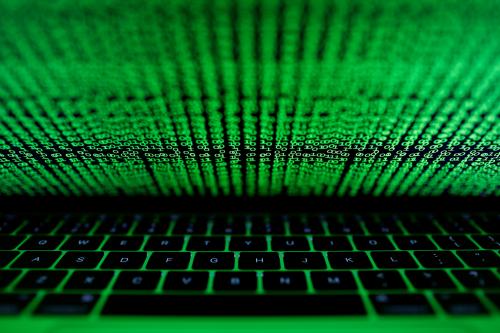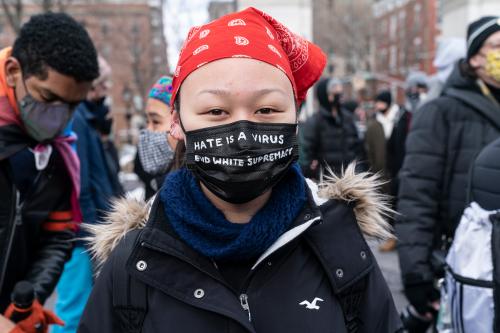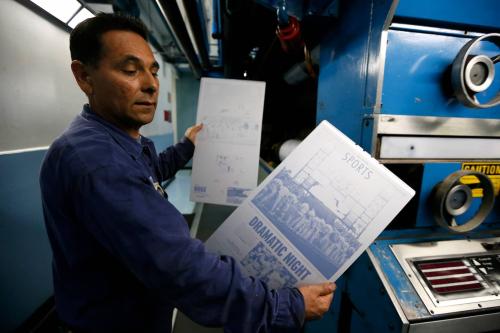Mass shootings that result in mass casualties are almost a weekly occasion in the United States, which—not coincidentally—also has the most guns per capita in the world. Viewed from outside the U.S., it seems that Americans are not bothered by the constant deadly gun violence and have simply adapted to it. Yet, our analysis of the well-being costs of gun violence—using Twitter data to track real-time responses throughout the course of these appalling events—suggest that is not necessarily the case. We focus on the two March 2021 shootings in Atlanta and Boulder, and compare to similar data for the “1 October” (Las Vegas) and El Paso shootings a few years prior. (Details on our methodology can be found at the end of this blog.)
A reason for the one-sided debate on guns is that beyond the gruesome body counts, we do not have many tools for assessing the large—but unobservable—effects of this violence on family members, friends, and neighbors of the victims, as well as on society in general. By assessing how emotions evolve over time, real changes can be seen in Twitter messages. Our analysis shows that society is increasingly angered by gun violence, rather than simply adapting to it.
A striking characteristic of the response to the 1 October shooting is the immediate influx of users sending their thoughts and players to the victims and the Las Vegas community. Figure 1 shows the top emoji usage and “praying hands” being the most frequently used emoji. Although that is still the most used emoji in response to the other shootings, the margin between “praying hands” and other emojis has substantially decreased in recent responses to Atlanta and Boulder. Our focus is on the “yellow face” emojis, which can correlate to six primary emotions categories: surprise, sadness, disgust, fear, anger, and neutral. While the majority of face emojis reflect emotions of sadness in the 1 October and El Paso shooting, new emojis like the “red angry face” show greater feelings of anger in the Atlanta and Boulder shootings shown in Figure 3.
Figure 1. Top 10 emojis used in response to the 1 October shooting
 Source: Authors
Source: Authors
Figure 2. Top 10 emojis used in response to the El Paso and Dayton shootings
 Source: Authors
Source: Authors
Figure 3. Top 10 emojis used in response to the Atlanta and Boulder shootings
 Source: Authors
Source: Authors
Taking a deeper look at the emoji usage of the Atlanta and Boulder shootings, the “praying hands” emoji usage was often paired with “broken heart” and “sobbing face” emojis, and belonged primarily to retweets (above 80 percent) of tweets made by celebrities, politicians, and news correspondents. Among other things, this demonstrates the power that users with a large number of followers have on the response and sentiment shared online. The “US flag” emoji was not used as a sign of patriotism but represents tweets from outside the United States reporting on the event. For the Atlanta and Boulder shooting, the “tears of joy” emoji was often used in tweets claiming that the Atlanta shootings did not pertain to race and that the belief had been perpetuated by “mainstream media” or in tweets not related to the shooting. The “red angry face” was widely used in tweets that expressed disdain and confusion over the gun violence and mass shootings.
Hashtags are another powerful tool used in social media to express opinions and reactions to recent events. In the 1 October shooting, hashtags like #prayforvegas were popular, as seen in Figure 4. Another notable hashtag used is #vegasstrong, which gained popularity as Las Vegas was trying to recover from the tragedy and now, variations of #*cityname*strong are a popular reaction to mass casualties since 2017. Yet as American communities become accustomed to recurring mass gun violence, emboldening becomes more difficult. As in Figures 5 and 6, hashtags like #elpasostrong and #boulderstrong are still used in reaction to these mass shootings but we see wider usage of other hashtags like #stopasianhate, or those related to gun reform. We also see this trend occurring in the earlier El Paso shooting, which reflected anti-immigrant sentiments emboldened by the previous administration, and also included hashtags such as #trump, #whitesupremacistterrorism, and #guncontrol now.
Figure 4. Hashtags used in response to the 1 October shooting
Source: Authors
Figure 5. Hashtags used in response to the El Paso and Dayton shooting
Source: Authors
Figure 6. Hashtags used in response to the Atlanta and Boulder shootings
Source: Authors
One of the difficulties in analyzing hashtags is that they often vary in the exact spelling or phrasing. We deal with this by putting the variations of an overall phrase into a hashtag bundle, as in Figure 7. These bundles include those that mention “prayfor” and is typically followed by a city name, “morethan” which is part of the full phrase “morethanthoughtsandprayers.” The category of “gun” most often refers to “guncontrolnow,” “gunreform,” among others that appear in the word clouds. Finally, there is the variation of a “*cityname*strong.” Since the 1 October shooting has more than three times the hashtag usage as both the Atlanta and Boulder shootings combined, we compare the relative usage of the hashtag bundles. El Paso data is excluded since the hashtag usage is not nearly as concentrated around such phrases.
There is a major decrease in the share of hashtags praying for the victims, their families, or the community for recent mass shootings. Conversely, there is an increase in the sentiment that we need more than “thoughts and prayers.” The same is true in the rallying effect that a mass shooting used to have, with a decrease in “*cityname*strong” in the Atlanta and Boulder shootings. Hashtag usage related to gun control and reform are quite similar across the shootings, even in the context of the more supportive nature of the 1 October responses.
Figure 7. Relative popularity of hashtag bundles between the different shootings
 Source: Authors
Source: Authors
While there are, of course, limitations to what we can infer from this data, it provides a glimpse of a more generalized shift in sentiment away from passive mourning to anger and desire for an active policy response. This is particularly the case when shootings are targeted toward a specific group, as in the case of politically motivated violence against Hispanics in the August 2019 El Paso shooting and Asian Americans in the case of Atlanta.
We need to know much more about the social and emotional costs of this violence—not least as it seems to come in contagious waves across events that exacerbate an already gruesome death toll. This is particularly important at a time when gun violence-related events have increased by roughly 30 percent between 2019 and 2020, while opioid and other drug overdoses have almost doubled, in large part due to the toll of the COVID-19 shock on mental health (these numbers are from in-progress analysis of EMS first responder data by one of us—Graham—with Emily Dobson of the University of Maryland). At this juncture, though, it is our hope that even this limited assessment of those costs—and the increasing concerns about gun violence—can translate into support for policies to reduce it. While gun reforms have proven politically difficult to pass in the past, the new administration is at least providing an opening to do so. What is clear, though, is that the victims of this violence—and their grieving family members and friends and an increasingly tattered social fabric—deserve more than thoughts and prayers.
Note on methodology
Several data collections are utilized for this study that pertain to different mass shootings in the U.S., starting with a collection created by University of Nevada, Las Vegas Libraries in the week following the 1 October shooting in 2017 and contains more than 14 million tweets. We compiled three more collections, including one for the El Paso shooting in August 2019 with approximately 700,000 tweets that also contains reactions to the Dayton, Ohio shooting that occurred one day later. The other two collections refer to the Atlanta and Boulder shootings that occurred in March 2021. Since the Atlanta and Boulder shootings occurred within six days of each other, many of the tweets discussing the Boulder shooting often mention the Atlanta shooting and vice versa. These two collections where combined and duplicate tweets removed, resulting in over 2 million tweets collected from March 16-25. While Twitter data does not provide robust detail on the socioeconomic and demographic data, Twitter users, who comprise 22 percent of the American population, are typically younger, more educated, and wealthier than the general public.
The tweets were catalogued using the open-source tool known as Twarc, which can archive tweets that pertain to a specific search term like “vegas,” as an example. For the figures shown here, we focused on the hashtag and emoji usage, and extracted them from the “full text” of the tweets. The emojis were then converted from Unicode to their written-out names. A greater discussion on the methodology and drawbacks of Twitter data can be found in our blog “How misinformation spread on Twitter.”











Commentary
Assessing the social and emotional costs of mass shootings with Twitter data
May 5, 2021